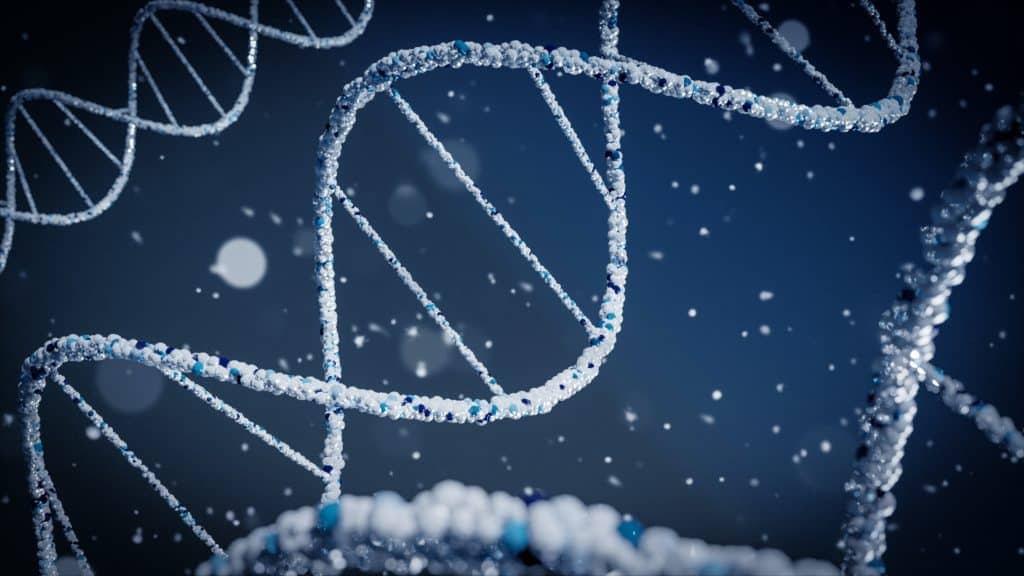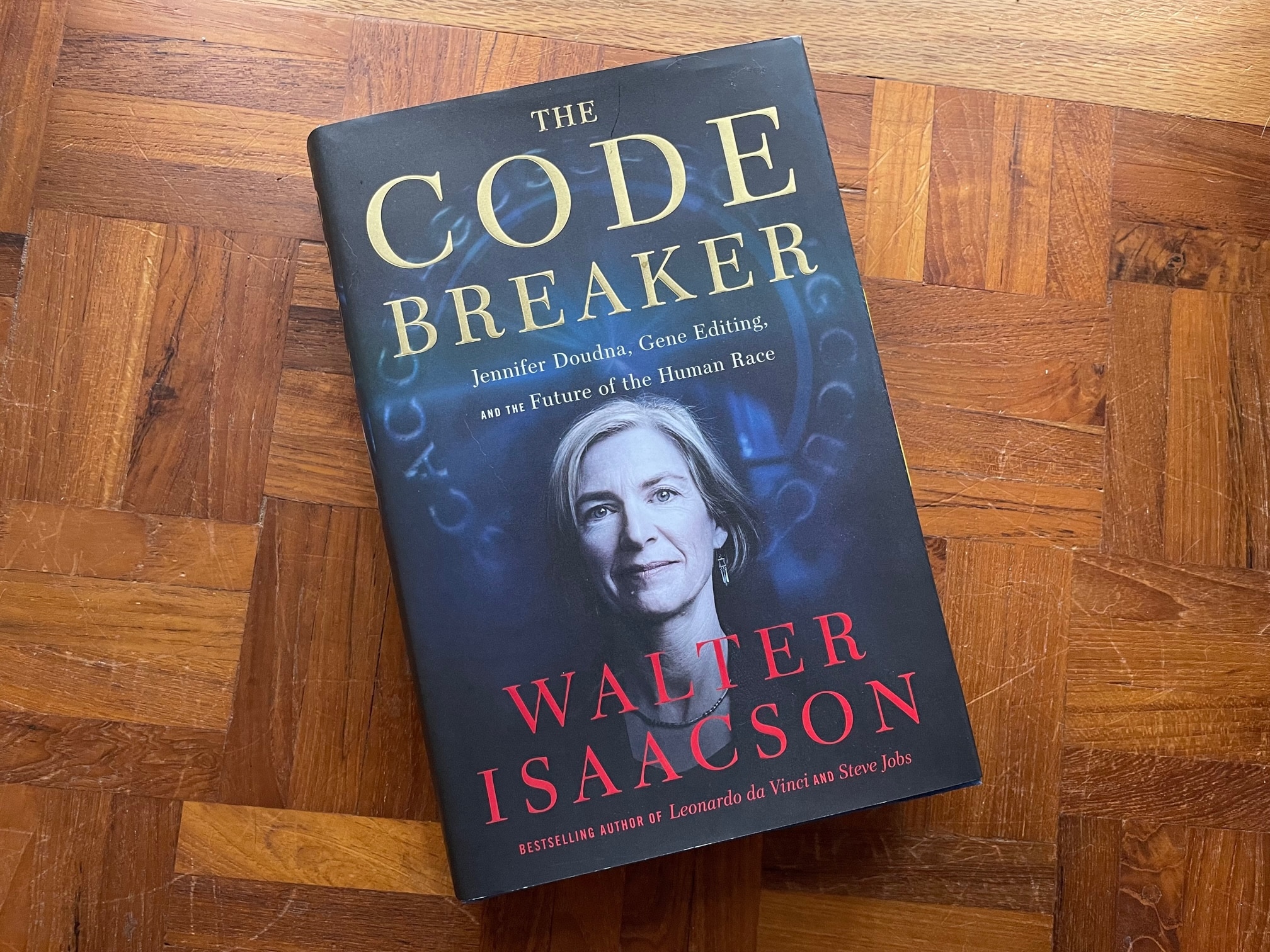Walter Isaacson gives a riveting and thorough look at the field of genetic engineering and the brilliant scientists who are leading it.
This post contains affiliate links. This means that if you make a purchase through one of these links I will get a small commission at no additional cost to you. I only recommend products and services to readers that I believe are valuable.
The Story of CRISPR and Dr. Jennifer Doudna
The Code Breaker: Jennifer Doudna, Gene Editing, and the Future of the Human Race, by veteran biographer Walter Isaacson, covers a multitude of areas related to the exciting field of gene editing. Although not strictly a biography of Dr. Jennifer Doudna, the book does center on the Nobel prize-winning biochemist and continually returns to her story as she and her lab worked to discover and engineer a system that can perform genome editing.
This gene editing technology is referred to by the acronym, CRISPR (Clustered Regularly Interspaced Short Palindromic Repeats). Simply put, bacteria have evolved a clever mechanism to protect themselves from viruses. By making a few crucial innovations, Doudna and her team were able to engineer a system that allows the scientist to custom program this genetic editing in an extremely powerful and flexible way.
“In short, they realized that they had developed a means to rewrite the code of life.”
Walter Isaacson
But that’s not all. A story this complex needs to venture into some additional areas.
International Cast of Characters
Doudna shared the 2020 Nobel prize in Chemistry with her primary collaborator on CRISPR, French scientist Dr. Emmanuelle Charpentier. She is a complex and interesting individual in her own right, and Isaacson could have just as easily made a compelling work focused on her character. Indeed, without her insights and contributions, particularly regarding tracrRNA, an essential component of the CRISPR system, there would be no CRISPR DNA editing technology. Noting that science is many times iterative and collaborative, Isaacosn does a good job covering the many, many people involved in spurring on CRISPR research.
The author examines those from Doudna’s lab, especially Martin Jinek, as well as others. He also looks at scientists from rival labs, primarily the Broad Institute on the east coast, where Chinese-American Feng Zhang and the institute’s founder Eric Lander are based. Personable mad scientist George Church is covered here also.
One of the neatest things prevalent throughout is how international the science is. Not only did Doudna partner with a scientist from Europe as well as employ international colleagues in her own lab, but there were other scientists operating around the world making their own associated discoveries. Seeing how the stories of these various researchers diverge and come together is part of the fun of the book.
Finally, Isaacson makes sure to include some controversial figures. The complicated legacy of James Watson, co-discoverer of the double-helix, is given examination as well are his interactions with colleagues Francis Crick and Rosalind Franklin . The dynamics of gender in science are mentioned here briefly (for a long time Franklin did not receive the credit she was due) both in a historical context and also in regards to the two women scientists who won the 2020 Nobel in Chemistry. The story of He Jankui, an overzealous Chinese scientist convicted of illegal medical practice, is also covered.
Discovering CRISPR and CRISPR Cas9 Technology
The story of the discovery of CRISPR in nature and then the following innovation of turning it into a custom editing architecture is exciting. It gains further momentum and drama when the race to adapt it to human (and other animal) cells takes off. Prevalent in this race is the dynamic of scientists collaborating while also competing with each other.
Part of this competition is for prestige, but part of it is a result of universities encouraging and supporting their research professors’ forays into entrepreneurship. Obviously there is big money in biomedical technology, so any researchers making discoveries where practical applications are a possibility almost have no choice but to reach for the brass ring. I loved this part of the book, but it also had me biting my fingernails.
Ethical Concerns
Without giving any spoilers, the actions of He Jankui brought to the forefront the many thorny issues surrounding the possible uses of gene editing, particularly so called germline editing, which is the process of making fundamental, permanent changes to DNA which are then passed on from generation to generation.
The book covers discussion amongst scientists and others as they attempt to grapple with the moral questions raised. Most agree that germline editing used to eradicate diseases and lessen suffering is a good thing and should be pursued. Less clear is what to do with the possibility of creating enhancements. Could we create a Homo Sapiens 2.0? Homo Superior? Yikes. Very exciting. And also terrifying.
What if there are unintended consequences? Who would these enhancements be for? Only the super rich? We might then run the risk of actually encoding economic inequality into the DNA of the human species.
These were some of the most interesting sections of the book for me. I can’t help but be excited about the CRISPR technology, but at the same time it does feel a bit like Pandora’s box. If and when government regulations are codified for this technology are we even going to be able to crack the lid of that box? To what degree?
And just my own thoughts here- what if Elon Musk gets his way and we finally have a chance at attempting to colonize Mars? Wouldn’t we want the colonists to have the best possible shot at surviving? Might that include making them smarter, stronger, more resilient? I don’t know but it’s fascinating to ponder.

COVID-19 Response
CRISPR was quickly put to work for a real worldwide emergency in 2020, when it was used to create several vaccines against COVID-19. What’s maybe less known, or at least less talked about is that the same scientists who worked towards an eventual vaccine first created another critical tool. COVID-19 detection kits.
This part of the book is brief but important. It also lays out some of the failings of the U.S. response to the pandemic which is maddening to read for sure.
Pros
The book covers a lot of territory, some would argue too much. I disagree however. For someone like myself, who really didn’t know anything beyond the double helix and Watson and Crick’s discovery of it, I needed and appreciated the extra content. By covering the history surrounding genetics science since then and the many scientists involved in the lead up to CRISPR, Isaaacson enhances the reader’s experience and gives the material a broader context. At the same time however, it also serves to make the narrative more personal as we are often given the particular viewpoints or circumstances of the people involved.
I also appreciated how Isaacson draws attention to larger dynamics such as the iterative and collaborative nature of science and the interplay between science, business, and government. One of my favorite themes in the book is that of “curiosity-driven” research. I’ve often felt that people do their best work when they’re allowed to follow their own interests.
This assumes that a person is driven and intrinsically motivated, but still, it’s often true. The discoveries that began the path towards the CRISPR technology were rooted in this philosophy, touched on below by Francisco Mojica, the microbiologist who first discovered CRISPR in microorganisms.
“When you do curiosity-driven research, you never know what it may someday lead to.”
Francisco Mojica, microbiologist
Cons
I’ve read most of Isaacson’s works, including those on Steve Jobs, Ben Franklin, Albert Einstein, and Leonardo da Vinci. He has a style that is thorough and broad but that still remains accessible. I like it. That being said, his writing in this book did stray from his usual style at times, with sometimes mixed results.
Occasionally, Isaacson interjects his own opinions and thoughts and they can seem out of character with the rest of the narrative. One particular passage seems to come out of left field when he draws comparison between James Watson and Emperor Palpatine from Star Wars. You can take a look around this website and see that I’m not against it in principle. I just found it jarring in the context of an Isaacson biography.
“In some ways he would be like an intellectual godfather, at least until he began saying things that seemed to emanate from the dark side of the Force.”
Walter Isaacson, on James Watson
I’m nitpicking here though. I’m not surprised that in this later stage in his career Isaacson might try some new things in his writing. It makes even more sense with the nature of the book, jumping back and forth between characters and events and timelines, that the author might write some non-traditional things. At the end of the day, it’s not enough to detract from the excellent reporting on the many facets of genetics research that is at the core of the book.
Final Thoughts and Rating
Isaacson communicates the excitement inherent in scientists chasing after new discoveries, ever on the cusp of completely transforming their field and our larger understanding of nature. He is convincing in making the argument that while the past few decades have belonged to the digital revolution, the coming decades will feature up and coming scientists and engineers that work with the code of life.
In 2020, Dr. Jennifer Doudna and Dr. Emanuelle Charpentier won the Nobel prize in Chemistry for their revolutionary innovation. Considering how new their research was, it is an extremely significant event that they were awarded the Nobel so quickly. If you are so inclined, you can read the groundbreaking 2012 Doudna-Charpentier paper here, where they outline their discovery of how CRISPR can be harnessed to edit genomes.
In summary, The Code Breaker is great for those who like Isaacson’s previous work, or who are interested in emerging technologies and the future of humanity.
FINAL RATING 5/5 – ⭐⭐⭐⭐⭐


